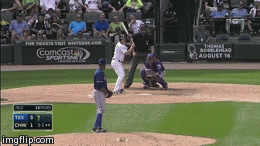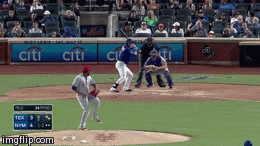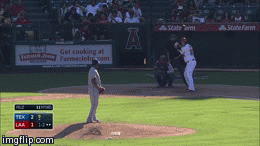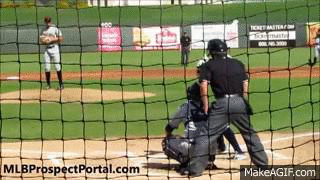The Ballad of Brett Lawrie
He’s not a good enough 3B and he doesn’t hit well enough to play at any of the easier defensive spots.
1261 PA, .273/.348./450, 102 OPS+
“He” is Edwin Encarnacion, then of the Cincinnati Reds, and those are his stats through his age 24 season (2005-2007). Just three years into his major league career, Encarnacion had yet to attain 600 PA in any one season, and questions were already be raised about his viability as an every day player. The quote above comes from here, and, to be fair, it represented the judgment of only some E5 observers. But despite having the opportunity to act out one of the best baseball revenge fantasies ever, Encarnacion never fully put those doubts to rest while he was with Cincinnati. Following what seemed to be a possible breakout season at age 25 in 2008, E5’s power disappeared the following year, and the disgusted Reds shipped him midseason to America’s Hat in exchange for the Ghost of Rolen Past, who gave Cincinnati the final 3.5 seasons of his career, 1.5 of which were useful.
North of the border, Encarnacion’s power returned in 2010 even as his OBP continued to regress; his production overall rebounded to the level it had been in 2008 (109 OPS+ and wRC+). He continued to maneuver around third base as though it were a point singularity, however, so in 2011 the Blue Jays began transitioning him to a 1B/DH, giving him 92 starts in those slots as opposed to just 30 at third. The results at the plate were encouraging: his average and OBP made substantial gains without giving away too much power. Then, in 2012, Encarnacion finally went off, commencing a three year tear during which his OPS has never been below .900 and his worst HR total was 34. Today, Encarnacion can hit in the middle of any major league lineup. If Alex Anthopoulos is working for the MLB Network in 2016, it won’t be Encarnacion’s fault.
***
He started off cold as ice … before getting hurt sliding into second base.
1361 PA, .250/.331/.415, 97 OPS+
“He” is Alex Gordon, and those are his stats through his age 24 season (2007-2009). Just three years into his major league career, Gordon’s stellar offensive production in college already seemed a distant memory, and questions were being raised about his viability as an every day player. The quote above comes from here, and while that writer was ready to give up on Gordon, to be fair, many others were calling on the Royals to remain patient with the second overall pick in the 2005 draft. In 2009 Gordon’s power, never substantial in the majors to that point, really began circling the drain, and after getting off to an anemic .685 OPS start in April 2010, the disgusted Royals demoted Gordon and banished him to left. He would never appear at third base again.
He would, however, rediscover his stroke. Gordon hammered 16 homers in just 321 PAs at Omaha, good for a steak-sized 164 wRC+. He returned to The Show on July 23, and while the remainder of his 2010 season did little to quiet his critics (he finished with a wRC+ of 85, actually two points worse than the previous year), in 2011 he began a four year rampage, headlined by 96 doubles during 2011-2012, as well as ironman durability. Since opening day 2011, Gordon is third in the majors in plate appearances, behind only Ian Kinsler and Elvis Andrus. Gordon’s durability and on-base skills have made him a key offensive cog in the Royals somewhat surprising resurgence. He’ll never have to go to back to Omaha unless he has relatives there.
***
He’s been injured numerous times, suspended and has underperformed with the bat once pitchers began taking advantage of his lack of patience at the plate.
1431 PA, .265/.323/.426, 104 OPS+
“He” is Brett Lawrie, and those are his stats through his age 24 season (2011-2014). Just four years into his career, his first 171 blistering plate appearances of his career have disappeared in the rearview, and questions are being raised about his viability as an everyday player. The quote above comes from here, and was written before Lawrie strained his oblique (once again) last year, ending his season and, as it turned out, his tenure with the Blue Jays.
Lawrie plays baseball as though he’s being chased by an enraged Sumatran tiger. In his first brief season in the bigs (when, incidentally, he replaced Encarnacion as the Jays’ starting third baseman) this paid off with a .293/.373/.580 slash line. Since then, however, he has been unable to translate all that energy into baseball achievement. That kind of intensity can wear thin unless it’s backed by production, and Lawrie’s rate stats have gone generally backwards since 2011. He’s had a fractured finger, repeated oblique injuries, and a bad slide into second, among other injuries. Lawrie blames the turf at Rogers Centre, but the turf lawyered up, and Lawrie’s case proved at best inconclusive.
As the career paths of Encarnacion and Gordon suggest, one way to resuscitate Lawrie’s bat might be to move him to the left end of the defensive spectrum. That won’t happen in Oakland; after the Donaldson trade the A’s third base depth chart (Renato Nunez aside) looks like the Fallujah skyline. Billy Beane has little incentive to try Lawrie anywhere other than third. And maybe it will work. The hopeful comp here might be Gary Gaetti, whose stat line through age 24 (1981-1983) looks similar to the other guys in this post, viz:
1241 PA, .237/.293/.428, 94 OPS+
But Gaetti was already a superior defender, and became a durable, full time starter at age 23. His plate appearances are light because he only had a shotglass of coffee in 1981.
Gaetti was good. Real good: a 42 WAR career during which he amassed 2,280 hits and 360 homers while adding defensive value almost right up to the end. It’s certainly worth Beane’s time to see if he has that kind of player on his roster, especially since it appears that the A’s are going to be running a talent show rather than a pennant race next season. My guess is that if Lawrie develops at third, he’ll have slightly more bat and slightly less glove than Gaetti, though to be fair, both men had exactly the same career minor league OPS (.851).
It’s less clear whether participating in this particular rat race is the best outcome for Lawrie. Like E5 and Gordon, he might be better served by moving to a safer corner where he can concentrate on developing his offensive skills without placing his body’s soft tissue in excessive danger. I’m sure if you asked him he’d say he wants to stay at third. My guess is that Encarnacion and Gordon once thought that way too, and Lawrie’s career to this point looks more like theirs than Gaetti’s.
Brett Lawrie, like Repo Man, is always intense. I have a hard time not rooting for him; he attacks his job with an explosive, exuberant passion that would get me (and probably you) fired. I want him to succeed. I’m not at all sure he will.











